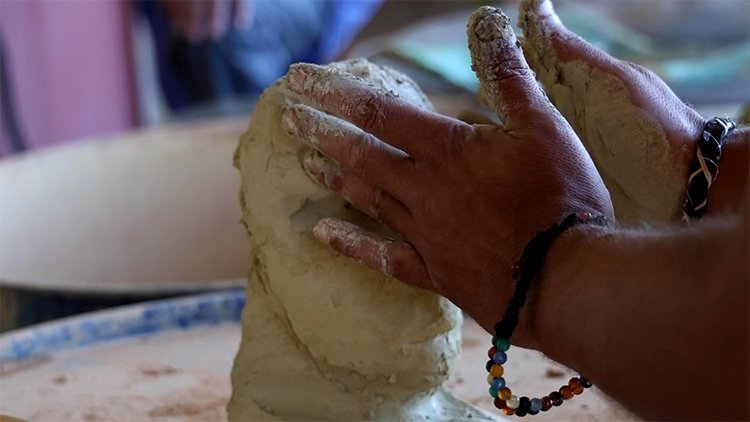© Turkuvaz Haberleşme ve Yayıncılık 2025
Lebanese sculptor and writer Semir Mansur is using his craft to reflect the emotional landscape of those who have witnessed the conflicts between the Israeli army and Hezbollah in southern Lebanon. His sculptures embody the raw sentiments of the people living through these turbulent times.
El-Hebbariye, a town in southern Lebanon, has been a focal point of the Israeli-Hezbollah conflicts. On March 27, an Israeli airstrike targeted the Lebanon County Ambulance Association, affiliated with the Jamaa al-Islamiyya, killing seven paramedics.
In response to the devastation in Hebbariye, sculptor Semir Mansur has turned to clay to capture the faces and emotions of the town's residents. Using clay collected from the region, Mansur creates busts that reflect the sorrow, despair, determination and resilience of the local population.

Mansur's journey into sculpture began after he was introduced to the medium by his wife, following his work as a playwright and short story writer. For years, he has been dedicated to this art form, finding a particular attraction in working with clay. He notes that the material is readily available in southern Lebanon and provides a versatile canvas for his artistic expression.
"The world of clay is multidimensional," Mansur explains. "It pushes the boundaries of one’s imagination. By shaping it, you can alter something that cannot be changed in the real world."
Mansur's home has numerous clay busts, each with its own story. He believes that each face he carves is imbued with a narrative and a lesson to be learned. He recounts how the faces he saw in Hebbariye left a lasting impact on him, which he then translated into his sculptures.
Holding one of his busts, Mansur describes it: "For instance, this face belongs to an elderly woman from the village. Depending on the angle, you might see a mother, a neighbor or an older woman who has weathered many years. In this face, you can perceive both sorrow and a smile, as well as the emotion etched into her wrinkled cheeks."
In another piece, Mansur combined the human face with images of pine trees burned by a phosphorus bomb dropped by Israel about a month ago. He explains that the sculpture portrays the suffering of the pine tree and the "face" questioning, "Why did you burn me?"
One of Mansur's most poignant works is a bust representing one of the paramedics who lost their life in the March 27 attack. Mansur has depicted this face with a sense of sorrow, reflecting the tragedy of someone who was attacked while performing their humanitarian duties.
Through his art, Mansur provides a powerful commentary on the human cost of conflict, turning personal and collective grief into a visual representation that resonates with both those who experienced the events and those who view his work.
